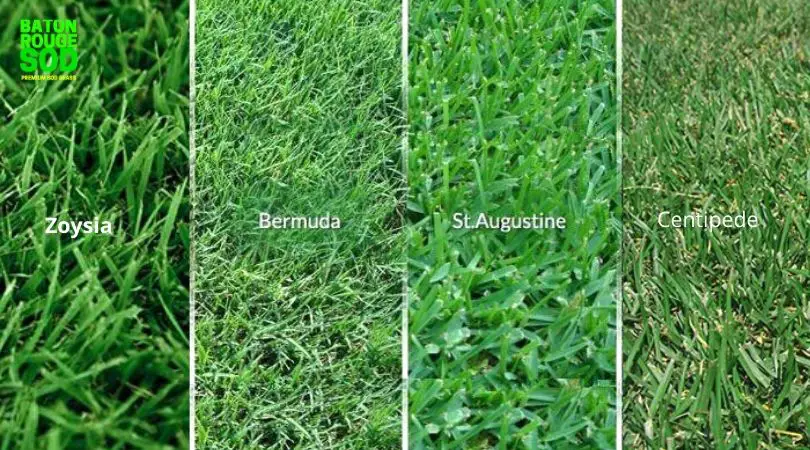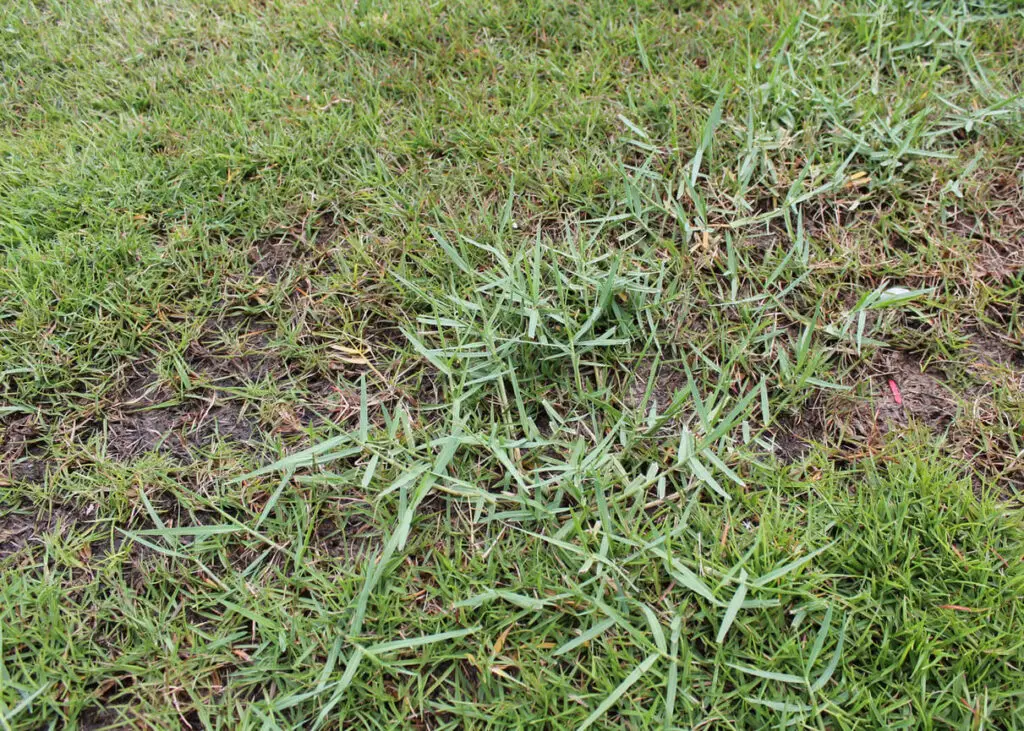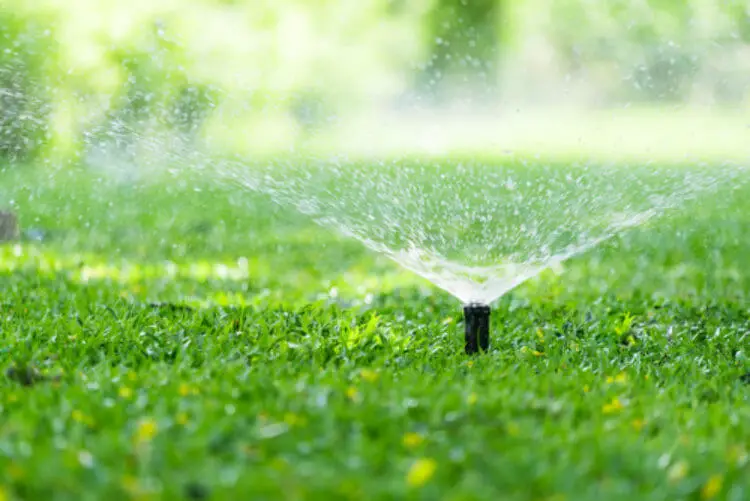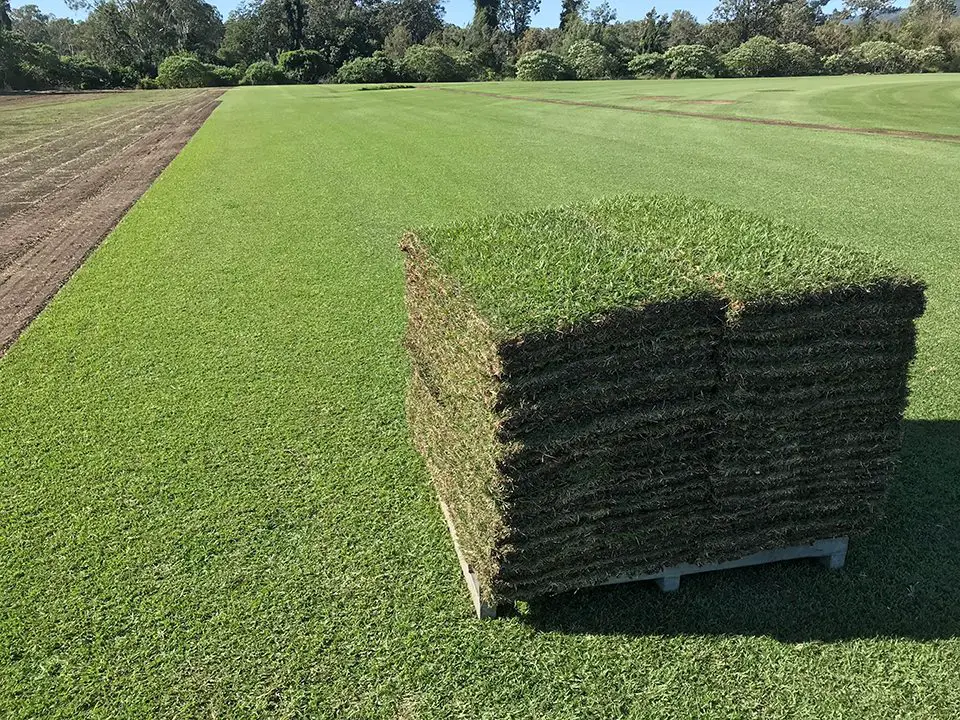You go outside, look at your lawn, and notice something’s wrong.
After taking a closer look, you see patches of dead grass, with evidence of bugs.
If you’re dealing with these issues in your lawn, sod webworms could be the cause.
Sod webworms are small caterpillars, also called lawn moths, which can quickly strip a lawn of its grass.
They leave behind annoyingly small, brown patches of dead grass.
You know you have an urgent problem if you see these patches, especially the caterpillars themselves.
As the name suggests, Sod webworms are small, destructive pests that live in and ravage lawns and other grassy areas.
The adult moth is not particularly harmful, but the larvae caterpillars can swiftly cause a lot of irreversible damage to turf.
When you confirm you have these critters, there are steps you can take to get rid of them.
What Is A Sod Webworm?
In the United States, sod webworms are one of the most frequently reported lawn grass pests.
These insects receive their name from the webbing they spin in the grass to make cocoons.
A crambus is a big group of insects that includes around 20 different species (Family Pyralidae).
In the caterpillar stage, they grow and feed on lawn turfgrass.
They destroy the grass by devouring it and leaving barren patches behind.
The caterpillars are greyish-tan to brown in color, with small black dots on their bodies and brown heads.
Once they change forms, the moths are light brown in color and around 1/2″ to 3/4″ long, with antennae reaching upwards from the head.
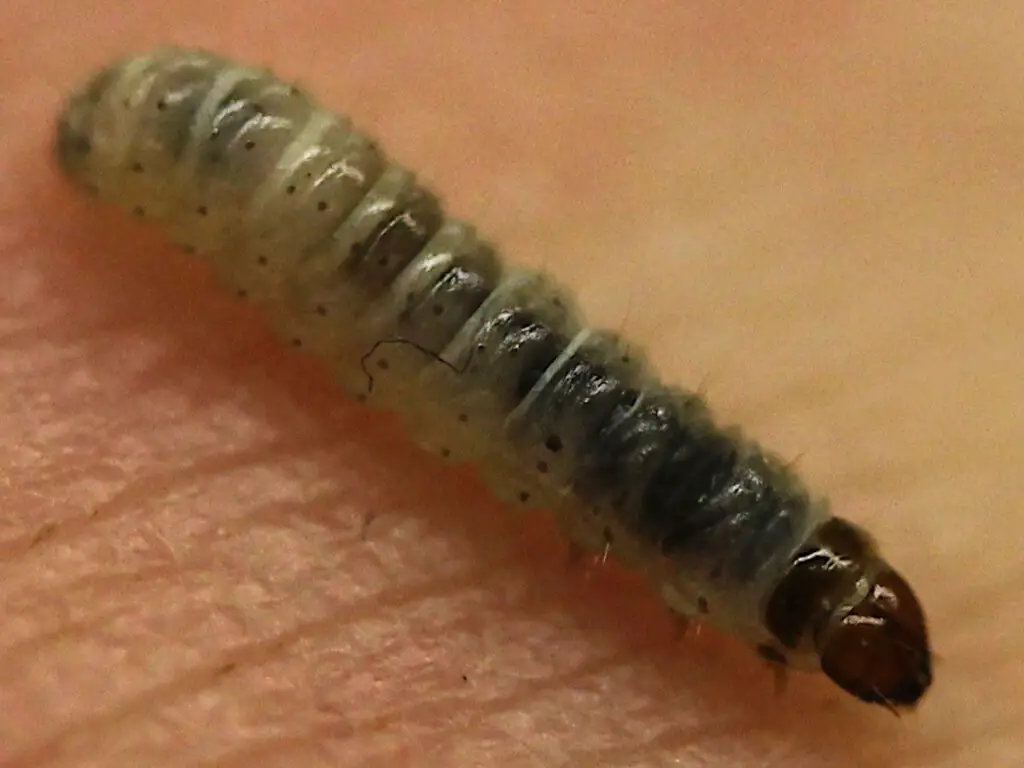
Sod Webworm Identification:
What Do Sod Webworm Caterpillars Look Like?
The adult sod webworm is a small, brownish-grey moth that is often seen fluttering around at night.
Female moths lay their eggs on the grass, in the thatch or blades of grass.
The larvae hatch a few days later from the eggs and feed on the grass blades.
Web worm larvae are small, light brown, tan, or greyish looking grubs with brown heads.
They mechanically feed on grass for several weeks before pupating into adults. This feeding results in brown patches on the lawn.
Sod webworm caterpillars are small, brown worms with a striped pattern on their bodies.
They grow to be about 1/2 inch long.
When they mature, they transform into moths that are dark brown or black in color.
What Do Sod Webworm Moths Look Like?
When you see a sod webworm moth, you will notice a small, brownish-grey moth with a wingspan of about 1/2 inch.
People see them daily during the warm season, and never pay them any attention.
When you do take time to observe these moths you’ll see the front wings are mottled with dark and light markings, and the hind wings are pale grey.
They fly around and land on the grass, they appear to be most active in the mornings and evenings.
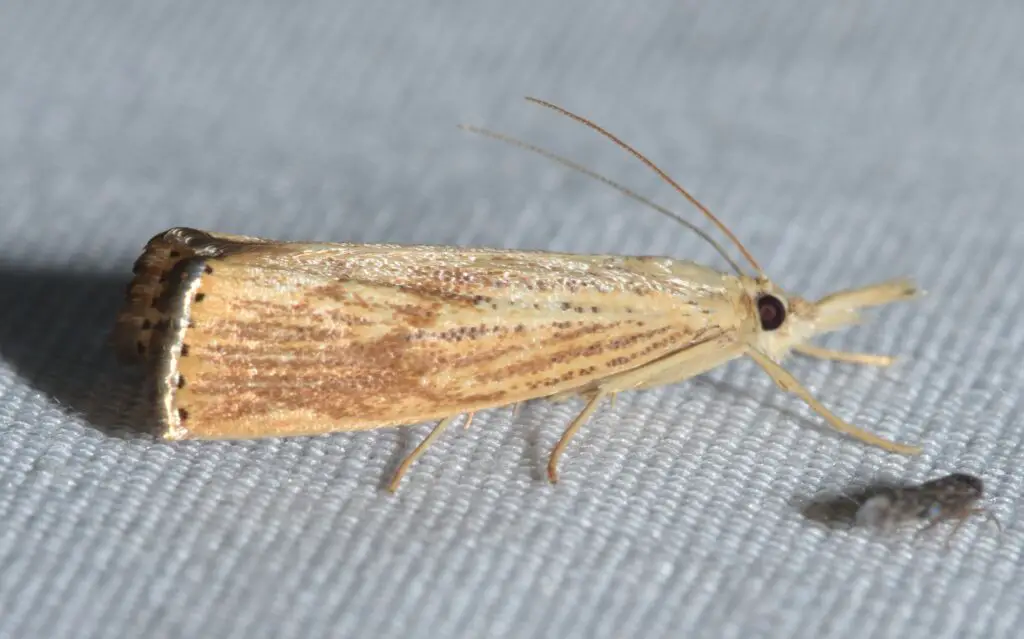
What Are the Signs of a Sod Webworm Infestation?
According to the National Pest Management Association, sod webworms are the number one turf pest in the southern United States.
They cause extensive damage and should be removed as soon as possible.
They’re especially fond of St. Augustine grass, bermudagrass, centipedegrass, and zoysiagrass.
But they’ll also eat buffelgrass and feed on cool-season grasses like Kentucky bluegrass.
They cause brown patches as they feed and can quickly destroy a lawn if not controlled.
There are several signs that may indicate a sod webworm infestation.
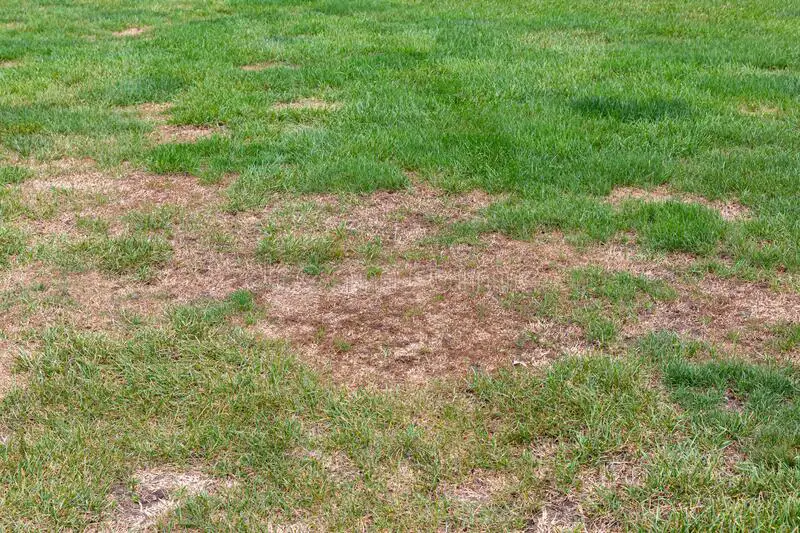
Signs of Turf Infestation: What are the symptoms of lawn grubs?
Sod webworm symptoms are often confused with other turf pests such as chinch bugs and billbugs, which can also cause brown patches in turf.
- Brown patches of grass in your yard.
- Damage includes areas of wilted or yellowing grass.
- Grass that appears to be thinning or dying.
- Bare areas in your lawn with no grass.
- Small, brown moths flying around the affected area.
- Increased activity of birds is usually an indication of webworms. Flocks of birds on the lawn in spring could be a sign of white grub presence.
However, this isn’t always a good indicator of an issue.
If your grass is looking brown and patchy, it may be time to check for these critters.
How to identify sod webworm damage In Your Lawn
Sod webworm damage is usually easy to identify.
The first easily visible sign of damage is usually small, circular patches of dead or dying grass.
These areas will gradually increase in size as the web worms continue to feed on the turf.
In some extreme cases, you may also see them lazily crawling around on the ground or on leaves near the affected area.
The caterpillar grubs are often found in these areas, feeding on the grass.
When you suspect webworm damage, there are things you can do to confirm it.
First, check for patches of dead grass.
If you see these, look closely for the presence of caterpillars.
Sod webworms routinely leave behind small pellets of excrement; so another sign of their presence is the presence of these pellets near the damaged areas.
You may also see adult moths flying over your grass in the evening hours.
Adult moths are a sign that you may have sod webworms lurking in your turfgrass.
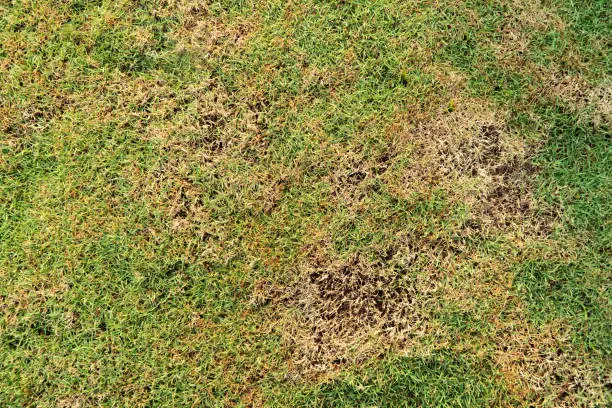
Sod Webworm Lifecycle
Brownish-grey moths fly close to the ground in search of host plants on which to lay their eggs.
They land and lay their eggs on the blades of grass.
The caterpillars that hatch from these eggs are the destructive stage of the insect’s life cycle, as they feed on the blades of grass in turfgrass areas.
The sod webworm has a four-stage lifecycle: egg, larva, pupa, and adult.
The female moth lays her eggs inside a web she spins of fine silk.
The eggs are laid in irregular masses of 50 to 75 by the female and hatch in approximately three days.
Larva Stage
Each larva grows to a length of about 1 inch, molts four times, and then spins a loose net for pupation.
The webworm stays in the larva stage for about seven days, and then it changes into the pupa stage for about 12 days.
Pupa Stage
Once it develops into the pupa stage, the insect is enclosed within a cocoon-like structure and remains in this stage for about 10-12 days, during which time it undergoes a metamorphosis.
Adult Moth
The adult moth emerges from the pupal case after around 16 days.
When the adults emerge from their cocoons, they mate, the females lay eggs to start the cycle over again.
They are most active in late spring and early summer.
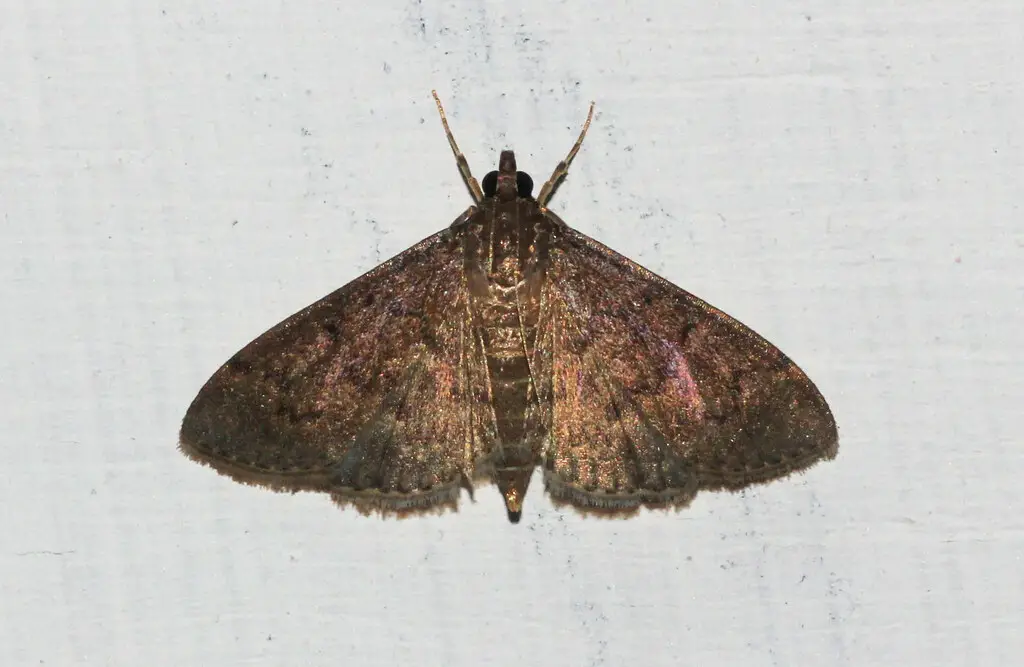
Do sod webworms kill grass?
Yes, sod webworms do kill grass.
The larvae feed on the blades and leaves, which can kill the grass if the problem is severe or left untreated.
While sod webworm moths themselves don’t usually cause too much damage to grass, their presence can be a sign of other problems, that might be present beneath the surface.
Consistent heavy rain, regular watering, or irrigation will generally let grass outgrow and recover from mild to moderate webworm damage.
How to prevent sod webworms in your lawn
The best way to control sod webworms is to maintain a healthy lawn so that they are less attracted to it.
You can apply lawn pest preventers that disperse into the soil to stop them before they start.
Here are a few tips for preventing sod webworms:
1. Inspect your turf regularly and remove any that you see.
2. Keep your grass healthy and well-watered – this will make it less attractive to intruders.
3. Use a pesticide specifically designed to repel and control sod webworms.
4. Avoid laying sod in inclimate weather, as this will attract these unwanted guests.
5. Mow the lawn regularly and remove any dead or dying grass.
6. Water deeply and evenly, especially during hot, dry periods.
This will make it less attractive to the bugs.
And finally, as soon as you see any signs of webworms, treat the affected area with an insecticide specifically designed to repel and kill sod webworms.
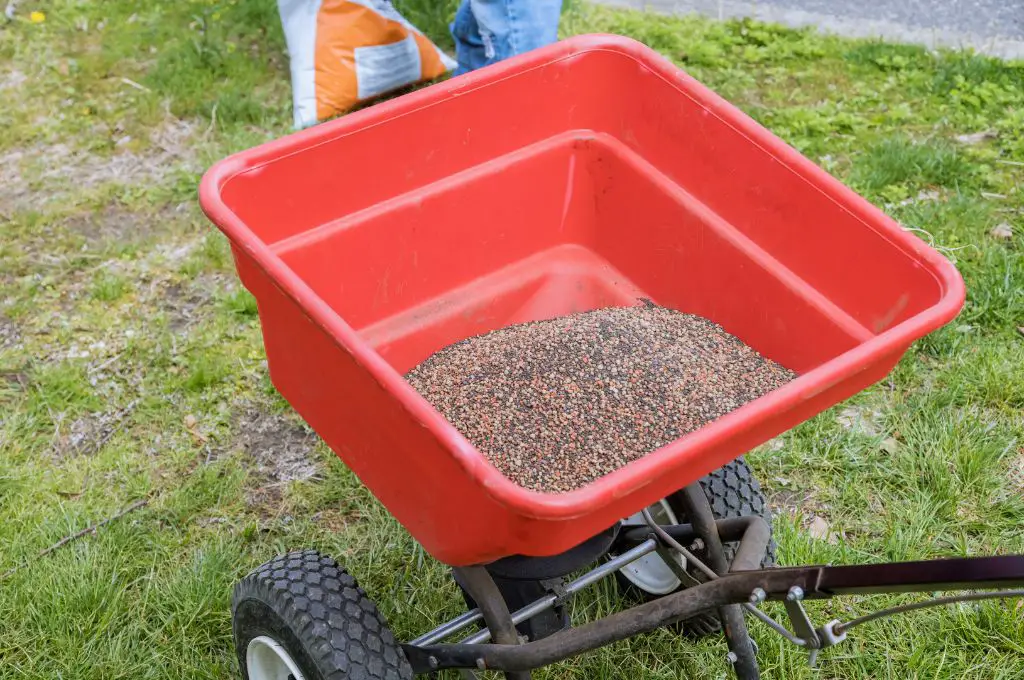
How to Treat Sod Webworms
To treat sod webworms, you will need first to identify the problem areas.
Once you have located the affected areas, you will need to water the grass deeply and thoroughly.
Watering will help to flush them out of their burrows and bring them to the surface.
Homemade Lawn Treatment
You can use insecticide or make a homemade lawn treatment with dish soap, water, and other over the counter ingredients.
Add the soap to a gallon of water to control larval development.
Pour the water mixture on the grass.
The worms come to the surface where you can observe and count them.
Apply a pesticide that is specifically labeled for use against sod webworms.
Bonus Tip: Aerate and fertilize the affected areas to help improve drainage and allow the lawn to recover. This is best done in early fall, well before frost or freezing temperatures.
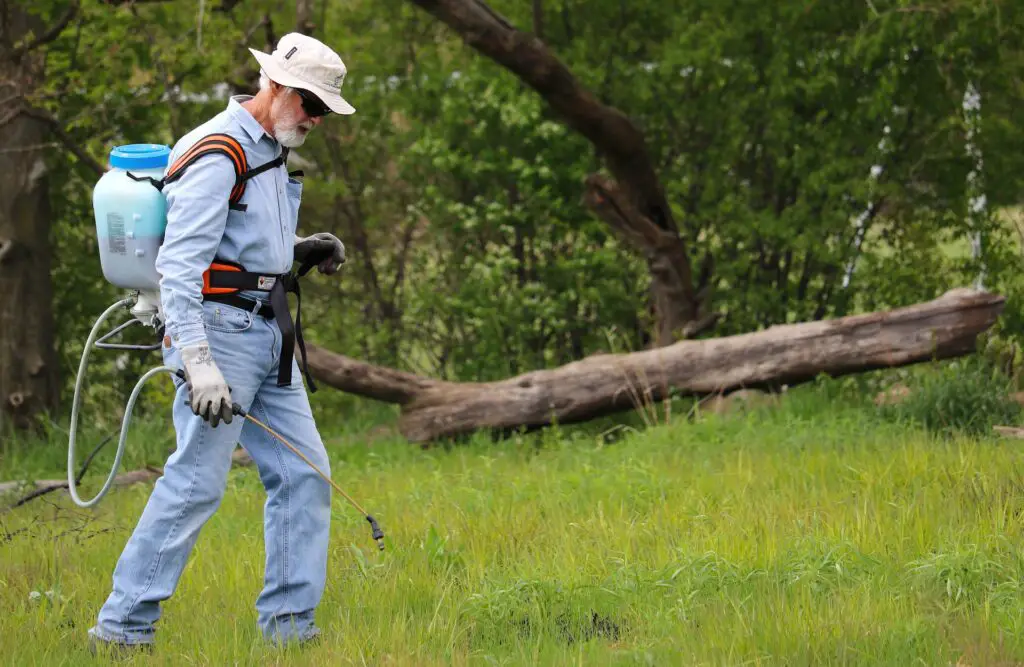
How to Kill Sod Webworms
Locate them first and confirm the cause.
To confirm you have these intruders, pour soapy water over the area; or pull back a section of damaged sod to look for larvae beneath the surface.
The best time to do this is early morning or late evening when they are less active and easier to catch.
If you find them, you can take steps to get rid of sod webworms and prevent further damage to your lawn.
To kill sod webworms, you can use a number of different methods.
Soil Drench Method
To make a soil drench, mix a blend of 2tbsp of liquid soap or insecticidal soap per gallon of water.
Pour the mixture onto the area where you notice the issues.
This will draw caterpillars to the lawn’s surface.
Nematode Method
Many home gardeners use nematodes to attack them in the soil.
Nematodes are microscopic natural predators that kill and eat caterpillars, including sod webworms and cutworms.
You want to make sure that you get enough nematodes into the soil where they can find their prey.
The best time to apply nematodes is in July and August, when the caterpillars are actively feeding.
Apply nematodes with a hose-end sprayer or backpack pump sprayer.
When applying nematodes, it’s best to do so early in the morning or late in the day, when temperatures are cooler, and there is less chance of evaporation from sun and wind.
If possible, water lightly after applying nematodes, as this will wash them down into the top layer of soil where they can get to work more quickly.
Biological Control Method
You can use biological insect control agents, such as Bacillus thuringiensis aka BTI, or other natural methods such as diatomaceous earth.
Cultural methods, such as mowing regularly also help prevent future outbreaks.
What Insecticide Kills Sod Webworms?
There are many different types of pesticides you can use to kill sod webworms.
For large areas you can use a hose-end sprayer with a selective insecticide to spray the grass directly.
You can use chemical insecticides, such as carbaryl or trichlorfon.
Some of the most common and effective options include carbaryl, cyfluthrin, and lambda-cyhalothrin. Pyrethrins work well on multiple insect infestations.
One of the best way to get rid of sod webworms is to use a pesticide containing Bacillus thuringiensis (BT), a bacteria that kills caterpillars.
Carbaryl is a broad-spectrum insecticide that kills many different types of insects, including sod webworms. It works by disrupting the nervous system of the insects it comes into contact with.
Cyfluthrin is another broad-spectrum insecticide that is effective against many different types of insects. It works by causing paralysis in the insects it comes into contact with.
Lambda-cyhalothrin is a synthetic pyrethroid that is effective against many different types of insects. It works by causing nerve damage in the insects it comes into contact with.
Bifentherin talstar
Does triazicide, grubex, sevin kill sod webworms?
Yes, they are effective at eliminating these.
Bacillus thuringiensis, carbaryl, and diazinon. granular insecticide.
Will grass grow back after sod webworm damage?
It is possible for grass to grow back after bad infiltration, depending on how severe the infestation was.
When you catch the problem quickly, the chances of recovery are high, but it is not guaranteed.
Once the larvae have finished feeding, they pupate and emerge as adults. The adult moths then lay eggs, and the cycle begins again. This cycle can repeat itself several times throughout the year, causing further damage to any grass that is trying to grow back.
They typically leave behind small patches of dead grass and bare dirt areas.
If you suspect you have turf pest control problems, it may be best to consult with a lawn care professional to confirm the diagnosis and develop a treatment plan.

Does Cold Weather Kill Sod Webworms?
Some species of sod worms and lawn grubs winter as larvae that are partially grown in silk-lined tunnels that are buried in the soil and the thatch.
Most years, the larvae return and become active around April or early May.
They lay eggs which hatch within a week, and the first-generation larvae are fed until mid-summer.
Webworms mature before they pupate and then emerge as adults around mid-June to mid-June.
A third generation is born during the rest of the year.
Sometimes, the generations overlap with the stages in the mid-summer.
How to get rid of sod webworms in your lawn
How to get rid of sod webworms in your lawn
If you have a sod webworm infestation, it is important to take action quickly.
These pests can do a lot of damage to your lawn in a short period.
There are several ways that you can get rid of sod webworms from your lawn.
Regular lawn care helps reduce and eliminate most issues. Treat, mow, and fertilize your yard regularly, and most problems will disappear.
The best way to ensure that your grass remains healthy is to take preventive measures to keep issues from infiltrating your yard.
Some tips to prevent them: mow regularly, water deeply, and keep your grass free of debris.


